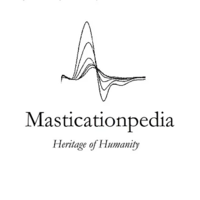Difference between revisions of "Book index"
| Line 66: | Line 66: | ||
* [[Jaw movements analysis. Part 1: Electrognathographic Replicator|Jaw movements analysis: Electrognathographic Replicator]] | * [[Jaw movements analysis. Part 1: Electrognathographic Replicator|Jaw movements analysis: Electrognathographic Replicator]] | ||
** [[Transverse Hinge Axis]] | ** [[Transverse Hinge Axis]] | ||
** | ** Vertical Hinge Axis | ||
** | **The Magic of the Condylar Sphere | ||
''' | '''Jaw movements analysis:Pantographic Replicator''' | ||
* | *Intercondylar Distance | ||
* Magnetic resonance imaging of the TMJ | *Magnetic resonance imaging of the TMJ | ||
'''Transcutaneous Electric Nerve Stimulation''' | '''Transcutaneous Electric Nerve Stimulation''' | ||
* Free way space before stimulation | *Free way space before stimulation | ||
* Free way space after stimulation | *Free way space after stimulation | ||
* Closing trajectory from TENS | *Closing trajectory from TENS | ||
'''Electromyography (EMG)''' | '''Electromyography (EMG)''' | ||
* EMG Interferential pattern | *EMG Interferential pattern | ||
* EMG at rest position | *EMG at rest position | ||
* Quantitative analysis of the EMG | *Quantitative analysis of the EMG | ||
** Fourier transform | **Fourier transform | ||
** Wavelett | **Wavelett | ||
'''Conclusions to the Paradigm crisis chapter''' | '''Conclusions to the Paradigm crisis chapter''' | ||
* Incompleteness in the 'Research Diagnostic Criteria' | *Incompleteness in the 'Research Diagnostic Criteria' | ||
* Need for a new paradigm | *Need for a new paradigm | ||
</div> | </div> | ||
| Line 99: | Line 99: | ||
'''Masticatory Neurophysiology''' | '''Masticatory Neurophysiology''' | ||
* Center of masticatory pattern | *Center of masticatory pattern | ||
* Mesencephalic mecchanism | *Mesencephalic mecchanism | ||
* Trigeminal Motor nucleus | *Trigeminal Motor nucleus | ||
'''Sensory network''' | '''Sensory network''' | ||
* Proprioceptive mechanisms | *Proprioceptive mechanisms | ||
** Neuromuscular spindles | **Neuromuscular spindles | ||
** Sensory mechanisms from the depressor muscles | **Sensory mechanisms from the depressor muscles | ||
** Golgi Tendon organs | **Golgi Tendon organs | ||
* Role of impulses from the neck muscles | *Role of impulses from the neck muscles | ||
* Periodontal and oral Sensory Factor | *Periodontal and oral Sensory Factor | ||
* Pharyngeal sensory closure | *Pharyngeal sensory closure | ||
* Sensory factors of the TMJ | *Sensory factors of the TMJ | ||
'''Trigeminal System Connectivity''' | '''Trigeminal System Connectivity''' | ||
* Definition of the Fundamental Unit | *Definition of the Fundamental Unit | ||
* Structural and functional connectivity separation | *Structural and functional connectivity separation | ||
* Understanding of 'Emergent Behaviour' | *Understanding of 'Emergent Behaviour' | ||
* Connectivity measurement | *Connectivity measurement | ||
** Maximal Neural Energy Evoked | **Maximal Neural Energy Evoked | ||
** Bilateral Trigeminal neuromotor organic symmetry | **Bilateral Trigeminal neuromotor organic symmetry | ||
** Functional motor symmetry | **Functional motor symmetry | ||
** Normalization concept | **Normalization concept | ||
** Organic vs Functional Symmetry | **Organic vs Functional Symmetry | ||
** Neuro Gnathological Functions paradigm | **Neuro Gnathological Functions paradigm | ||
** New Clinical Index | **New Clinical Index | ||
</div> | </div> | ||
</div> | </div> | ||
Revision as of 09:27, 13 October 2024
Normal Science
- Logic of medical language
- The Complex Systems
- Logic of medical language: Introduction to quantum-like probability in the masticatory system
- Conclusions on the status quo in the logic of medical language regarding the masticatory system
- 4° Clinical case: Temporomandibular disorders
- 5° Clinical case: Spontaneous Electromyographic Activity
Crisis of Paradigm
Research Diagnostic Criteria (RDC)
- Jaw movements analysis: Electrognathographic Replicator
- Transverse Hinge Axis
- Vertical Hinge Axis
- The Magic of the Condylar Sphere
Jaw movements analysis:Pantographic Replicator
- Intercondylar Distance
- Magnetic resonance imaging of the TMJ
Transcutaneous Electric Nerve Stimulation
- Free way space before stimulation
- Free way space after stimulation
- Closing trajectory from TENS
Electromyography (EMG)
- EMG Interferential pattern
- EMG at rest position
- Quantitative analysis of the EMG
- Fourier transform
- Wavelett
Conclusions to the Paradigm crisis chapter
- Incompleteness in the 'Research Diagnostic Criteria'
- Need for a new paradigm
Extraordinary science
Masticatory Neurophysiology
- Center of masticatory pattern
- Mesencephalic mecchanism
- Trigeminal Motor nucleus
Sensory network
- Proprioceptive mechanisms
- Neuromuscular spindles
- Sensory mechanisms from the depressor muscles
- Golgi Tendon organs
- Role of impulses from the neck muscles
- Periodontal and oral Sensory Factor
- Pharyngeal sensory closure
- Sensory factors of the TMJ
Trigeminal System Connectivity
- Definition of the Fundamental Unit
- Structural and functional connectivity separation
- Understanding of 'Emergent Behaviour'
- Connectivity measurement
- Maximal Neural Energy Evoked
- Bilateral Trigeminal neuromotor organic symmetry
- Functional motor symmetry
- Normalization concept
- Organic vs Functional Symmetry
- Neuro Gnathological Functions paradigm
- New Clinical Index
